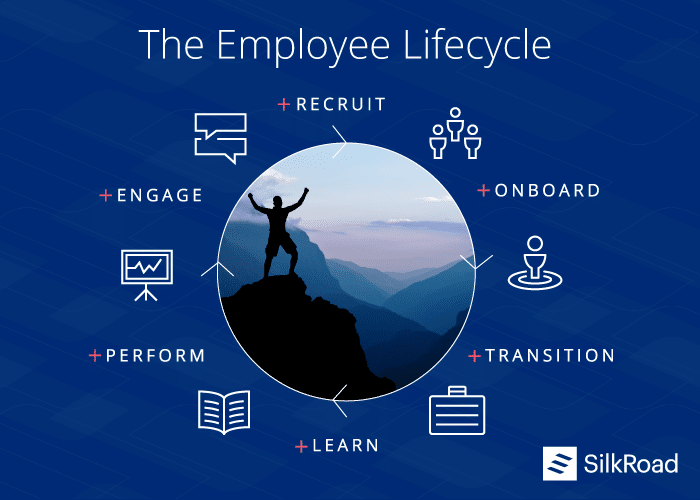HR’s Role in Helping Organizations Accept Feedback
(Editor’s Note: Today’s post is brought to you by our friends at SilkRoad, a global leader in Talent Activation. Be sure to check out their 2017 State of Talent report, which provides an in-depth analysis of the issues that matter most to human resources.)
Feedback is about performance. The reason people give feedback is to either ask someone to improve their performance or to tell them “keep doing what you’re doing”. There’s a direct corresponding relationship between the two factors. The better the quality of input; the better the resulting performance.
So, it stands to reason that organizations need good feedback at every level. Some of the comments a company receives is from customers, and possibly, shareholders. Organizations might use outside resources to gather that feedback.
However, the third (and most important) constituent is employees. Organizational performance is driven by employees. HR plays a key role in obtaining employee feedback and communicating it to senior management.
5 Ways HR Impacts Organizational Feedback
If you think about the employee life cycle, feedback is an essential piece in each phase – from new hires to activated employees to departing employees – and every transition in between. HR plays a central role in the success of each phase. Here are some examples:
- Recruiting – HR needs input about the hiring process from hiring managers and candidates. I’ve worked places where we conducted a new hire survey to get feedback from candidates about our hiring process. HR also needs to hear from management that the organization’s replacement and succession planning efforts are meeting the company’s talent needs.
- Onboarding – The best way to learn is by gaining knowledge and skills when you need them. Then being able to apply those new knowledge and skills. HR and hiring managers are tasked with making sure that employees learn what they need to know at the time they need to know it. Part of the process includes following-up with employees to confirm learning is on target, on schedule, and in alignment with the organization’s needs and goals.
- Performance Management – HR and department managers are responsible for setting and communicating performance standards. This takes place during the hiring process, orientation, and onboarding. Once performance standards are communicated and employees receive proper training, then employees expect regular conversations about their performance.
- Employee Satisfaction – HR needs to receive feedback about compensation, benefits, rewards, and recognition. They need to know that what the company offers is internally fair and externally competitive. This has an impact on recruitment, employee engagement, and retention. Often this information is gathered during an internal employee satisfaction survey.
- Offboarding – Let’s face it – employees do leave the organization and that’s not always a bad thing. Even when employees leave, HR wants to receive honest, open input about the employee experience. Departing employees can be a source of candidate and customer referrals. There’s also the possibility that they might want to boomerang back to the organization at some point.
HR touches the entire employee life cycle; therefore, they control a big piece of the company’s feedback culture. If organizations want to transform their performance to a “high-performing” culture, they will rely on HR to solicit the quality and quantity of feedback necessary to make a difference.
Developing a Feedback Culture
We all know that getting quality input isn’t as easy as it looks. We can’t simply say, “We need feedback. Let’s go get some.” The organization encourages and accepts input by building a feedback culture. And organizations that do incorporate feedback as part of their values and culture will be well positioned to maintain a competitive and sustainable business. A couple of weeks ago, SilkRoad and I presented a webinar together on “Creating a Company Culture that Embraces Feedback”. If you didn’t get a chance to hear it live, no worries – you can still listen to the recording.
There are a few things that are essential to developing a feedback culture. The obvious ones include getting buy-in from senior management and the rest of the HR team, so they will model the behavior. Plus, building a feedback model that everyone in the organization learns – hopefully during onboarding – and uses.
[clickToTweet tweet=”Feedback cultures help organizations and employees do their best work” quote=”Feedback cultures help organizations and employees do their best work” theme=”style3″]
The final key piece lies with managers. They need to be prepared to reward employees for setting the example as well as coach employees who need help. They also need to be in a position to do something with the input they receive.
SilkRoad and I are taking the feedback culture conversation to the next level with a webinar next week (on April 18, 2017 at 12n Eastern) on “Coaching Managers to Welcome (and Accept) Employee Feedback”. Again, if you can’t make it – no worries – just register and you’ll receive the recording. But we hope you can join us.
I mentioned at the beginning of the year that 2017 is the “year of feedback”. Organizations and individuals need feedback to do their best work. But it must be quality feedback. HR plays a significant role in making that happen.
5